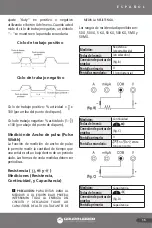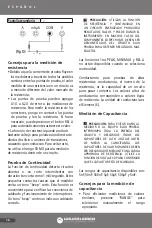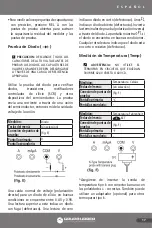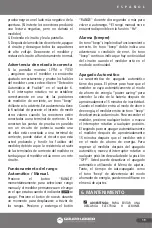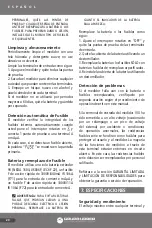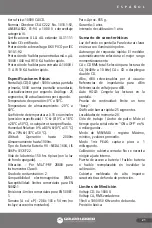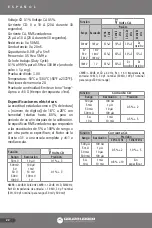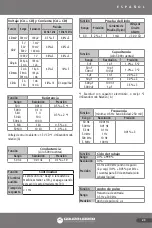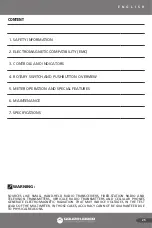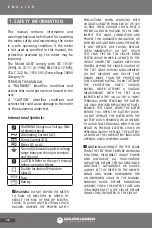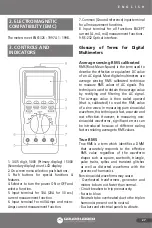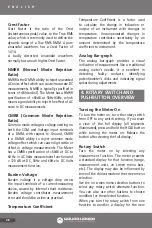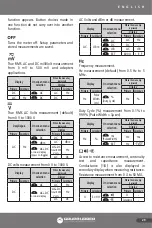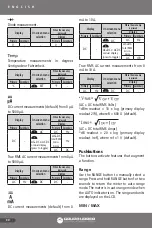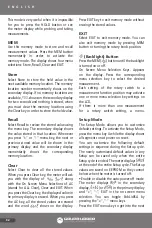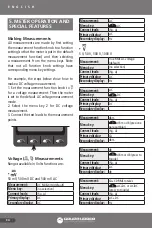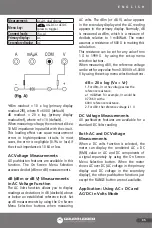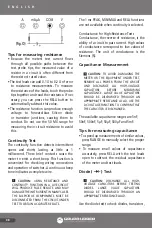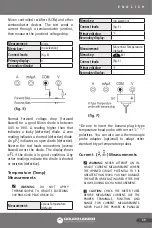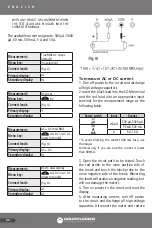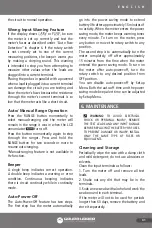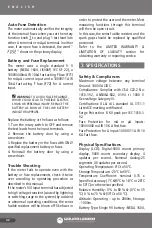
E N G L I S H
28
Crest factor
Crest Factor is the ratio of the Crest
(instantaneous peak) value to the True RMS
value, which is commonly used to define the
dynamic range of a True RMS DMM. A pure
sinusoidal waveform has a Crest Factor of
1.414.
A badly distorted sinusoidal waveform
normally has a much higher Crest Factor.
NMRR (Normal Mode Rejection
Ratio)
NMRR is the DMM’s ability to reject unwanted
AC noise effect which can cause inaccurate DC
measurements. NMRR is typically specified in
terms of dB (decibel). The Meter has a NMRR
specification of >60dB at 50Hz/60Hz, which
means a good ability to reject the effect of AC
noise in DC measurements.
CMRR (Common Mode Rejection
Ratio)
Common mode voltage is voltage existing on
both the COM and Voltage input terminals
of a DMM, with respect to Ground, CMRR
is a DMM’s ability to reject common mode
voltage effect which can cause digit rattle or
offset in voltage measurements. The Meter
has a CMRR specification of >60dB at DC to
60 Hz in AC Volts measurement function and
> 120 dB at DC, 50Hz and 60Hz in DC Volts
measurement function.
Burden Voltage
Burden voltage is a voltage drop across
the input terminals of a current-measuring
device, caused by internal shunt resistance.
Burden voltage contributes measurement
error and should be as low as practical.
Temperature Coefficient
Temperature Coefficient is a factor used
to calculate the change in indication or
output of an instrument with changes in
temperature. Uncompensated changes in
temperature contribute uncertainty by an
amount determined by the temperature
coefficient to instrument.
Analog Bar-graph
The analog bar-graph provides a visual
indication of measurement like a traditional
analog meter’s needle. It is excellent in
detecting faulty contacts, identifying
potentiometer’s clicks and indicating signal
spikes during adjustments.
4. ROTARY SWITCH AND
PUSHBUTTON OVERVIEW
Turning the Meter On
To turn the meter on, turn the rotary switch
from OFF to any switch setting. If you want
a view of the full display (all segments
illuminated), press and hold the HOLD button
while turning the meter on. Release the
button after viewing the full display.
Rotary Switch
Turn the meter on by selecting any
measurement function. The meter presents
a standard display for that function (range,
measurement units, on screen menu bars,
etc.). The display may also be influenced by
some of the choices made on the screen menu
selection.
Use the on screen menu selection buttons to
select any rotary switch alternate function.
You can also use other buttons to choose
modifiers for the selected function.
When you turn the rotary switch from one
function to another, a display for the new
Summary of Contents for UD87
Page 46: ...46 NOTAS NOTES...
Page 47: ...47 NOTAS NOTES...


